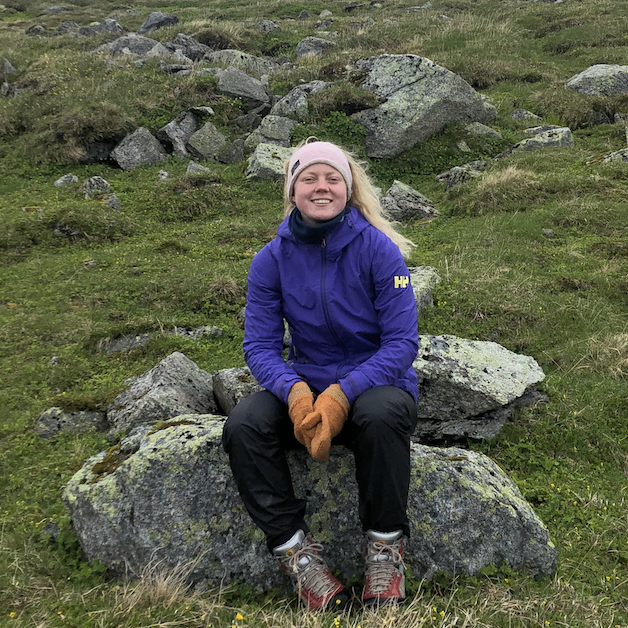Trees are the lifeblood of the earth. Their roots run deep in the soil and resemble the veins and arteries of our planet, sustaining and nourishing the life of the ground around them. Their very existence helps to create oxygen that sustains most life on our little planet. We are only now beginning to understand the intricate network of trees that cover the land, and how they communicate with us and each other (WWF, n.d.). Yet the ancients somehow knew this, without the science we have today. They saw how the trees branches reached up to touch the heavens and gave a home to the birds of the air. They saw how their roots dug deep into the soil below us, connecting the skies and the land we walk upon. Since humanity first walked this earth, we have been relying on trees to provide our food, from the berries and mushrooms that grow within them, to the animals our ancestors hunted between their trunks. They provide fuel for warmth, and timber for our shelters, and material for the boats that carried both people and their wares to distant shores so we could expand our world (WWF, n.d.).
The trees were also once a way for us to communicate with both spirits and Gods and many cultures have a long history of integrating trees in every aspect of their lives. Nowadays we somehow have divided the world into us and nature rather than being one with nature, and many people can probably go several days without contact and interaction with nature and trees. However, an ancient tradition with its origin from old traditions in the Shinto and Buddhist religions in Japan, shinrin-yoku, or “forest bathing”, has become a more popular activity again. The term forest bathing only emerged in the 1980 and it´s an activity that´s all about the trees and emerging oneself in the energy and space surrounding trees (Fitzgerald, 2019). In a simpler way, forest bathing is about going into the woods and just being, either stopping and taking a moment to observe everything going on in the woods or taking the time to observe what’s going on inside your body while you are in the forest environment, but nonetheless just being and existing in and with the forest (Banyard, 2019).

Margit Nikoline Langballe (BSc student, UiT The Arctic University of Norway)
EPA executive committee member
Growing up on a farm in a small village in Western Norway, nature has always been a big part of my life. Environmental physiotherapy is the perfect combination of two of my biggest passions.
Insta: @margittl

Photo by Sebastian Unrau on Unsplash
Before the summer I worked with an exam where I looked at the health benefits of walking in the forest or in green park area and I looked at three different studies and they all had the same conclusions; spending time in forests or park area do have a positive impact on both our physical and mental health (Song et al., 2018; McEwan et al., 2022; Tsao et al., 2022). One of the studies I looked at by McEwan et al (2022) wanted to look at the effects forest bathing activities in urban nature had on adolescents´ nature connection and wellbeing by evaluating the participants experiences before and after the intervention through surveys and interviews. One of the findings was that when the adolescents were interviewed about their “most connected moments with nature”, their most memorable experiences came from deep sensory immersion, which one may find in forest bathing, were they experienced calmness and relaxation (McEwan et al., 2022). When I read this, it caught my attention, and it got me thinking maybe one of the reasons they found the calming and relaxing experiences the most memorable is because they got a chance to just be and exist without the distractions and expectations that most adolescent face in today’s society. And it´s no secret that adolescents experience mental health problems and stress that maybe have their roots in the way our societies have developed into what they are today.
Now you might think that the fact that nature-based experiences are relaxing, and that nature has a therapeutic effect is common knowledge, and for many it probably is, but when we have research and evidence that can support these statements, we can then begin to use nature in a therapeutic way to provide knowledge- and evidence-based healthcare to our patients. Anyways for me, and maybe you too, sometimes getting gentle reminders of how cool and wonderful the forests really are, gets me inspired to get up and go out and into the forests and bathe in the calming atmosphere of the trees. In the end chances are that in the whole wide universe trees are actually rarer than diamonds.
References
Header image by Marita Kavelashvili on Unsplash
Banyard, I. (2019). The orgin of forest bathing & forest theraphy. https://www.ianbanyard.com/home/the-origin-of-forest-bathing-forest-therapy/
Fitzgerald, S. (2019). The secret to mindful travel? A walk in the woods. National Geographic: Travel. https://www.nationalgeographic.com/travel/article/forest-bathing-nature-walk-health
McEwan K, Potter V, Kotera Y, Jackson JE, Greaves S. (2022). This Is What the Colour Green Smells Like!’: Urban Forest Bathing Improved Adolescent Nature Connection and Wellbeing. International Journal of Environmental Research and Public Health, 19(15594). https://doi.org/10.3390/ijerph192315594
Song, C., Ikei, H., Park, B-J., Lee, J., Kagawa, T., Miyazaki, Y. (2018). Psycological Benefits of Walking through Forest Area. International Journal of Environmental Research and Public Health, 15(2804). https://doi.org/10.3390/ijerph15122804
Tsao TM, Hwang JS, Lin ST, Wu C, Tsai MJ, Su TC. (2022). Forest Bathing Is Better than Walking in Urban Park: Comparison of Cardiac and Vascular Function between Urban and Forest Parks. International Journal of Environment Research and Public Health, 19(3451). https://doi.org/10.3390/ijerph19063451
WWF verdens naturfond. (n.d.). Naturgoder: hva gjør naturen for oss?. WWF verdens naturfond. https://www.wwf.no/dyr-og-natur/naturgoder

